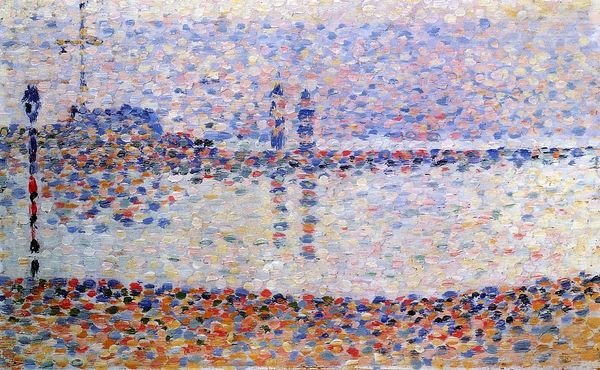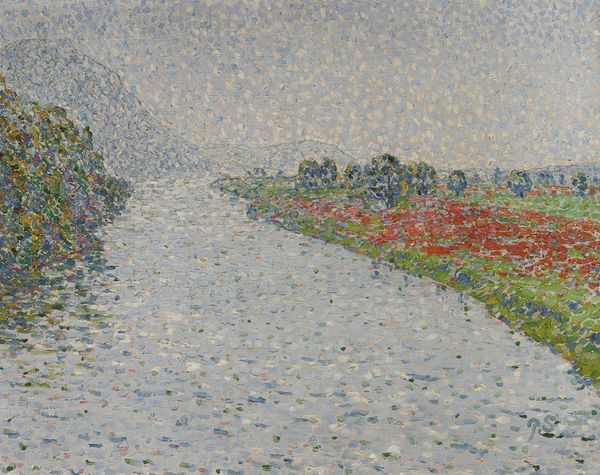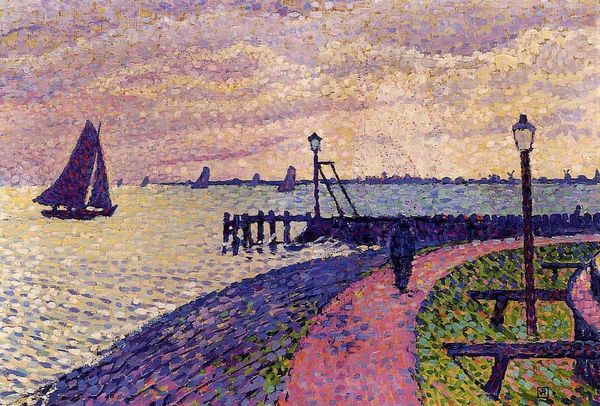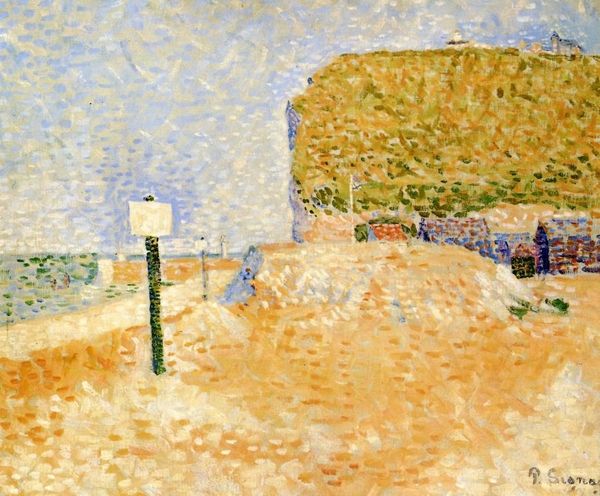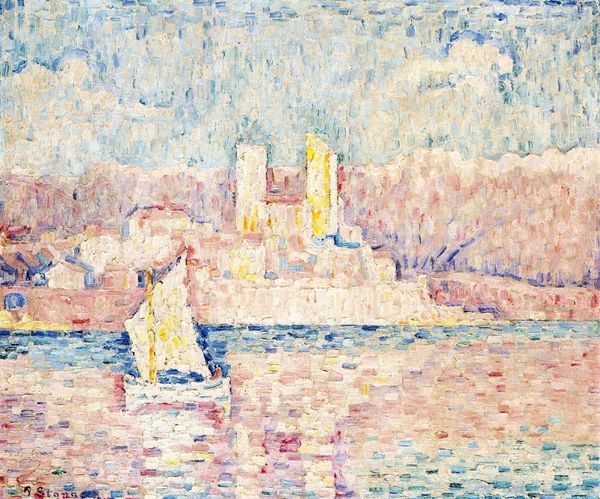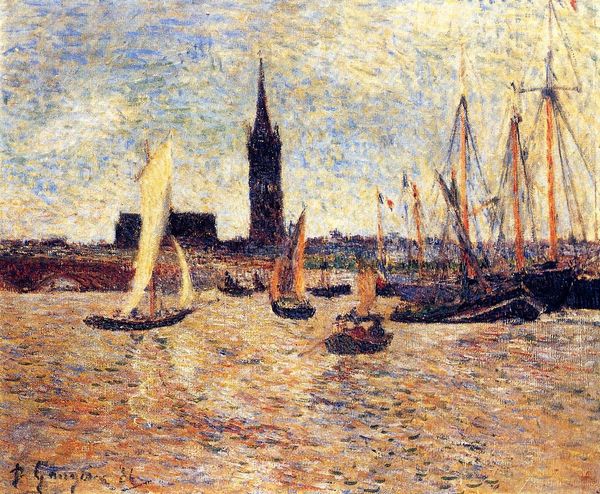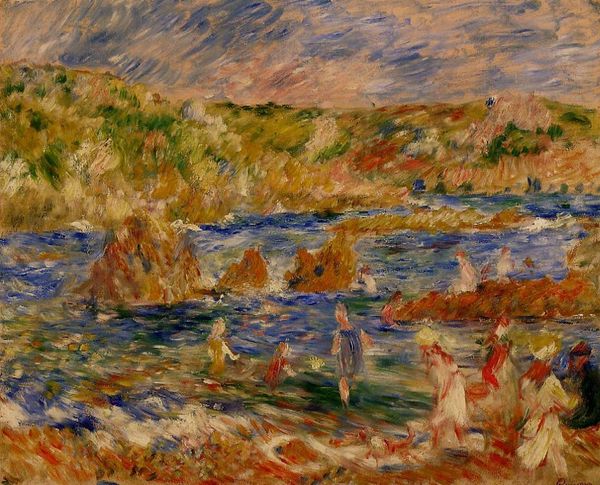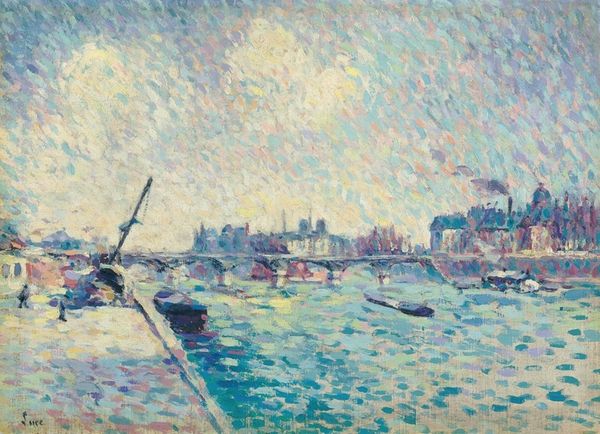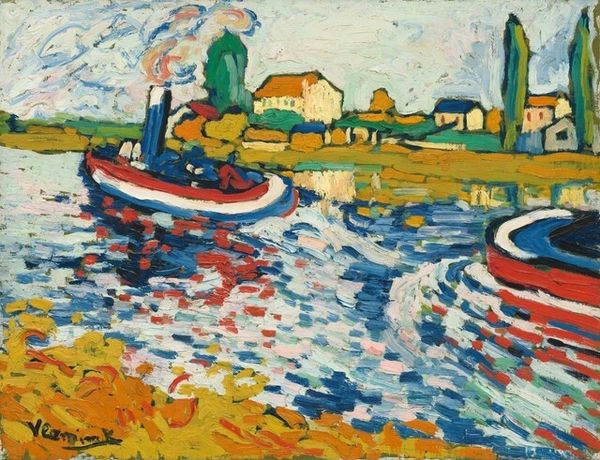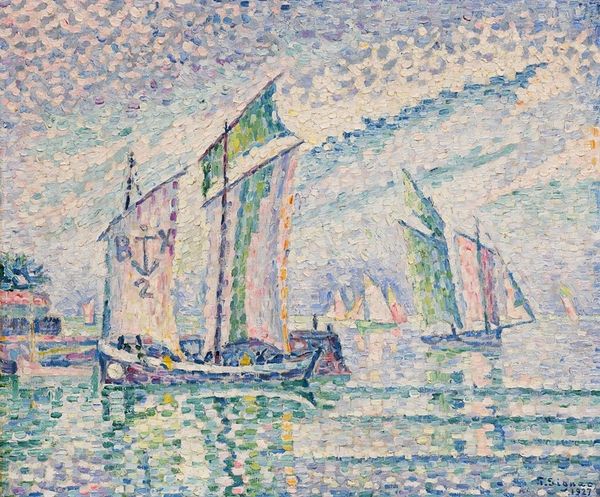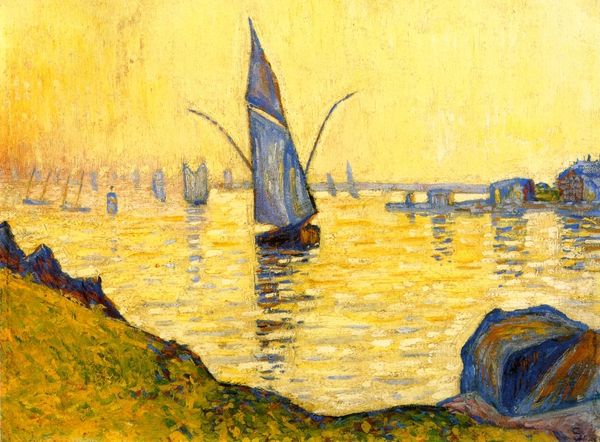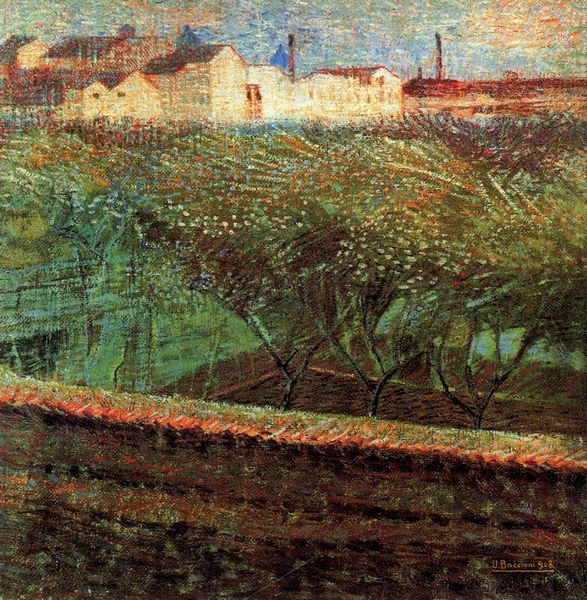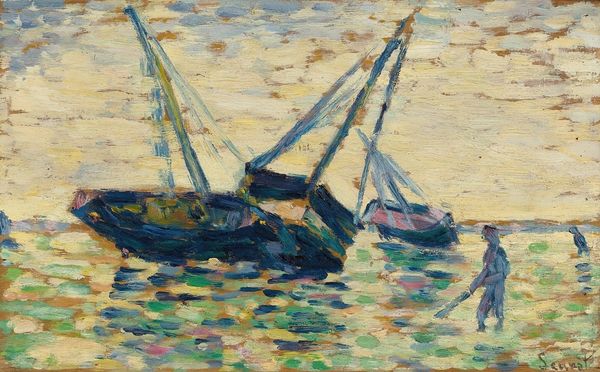
painting, plein-air, oil-paint
#
impressionist
#
boat
#
ship
#
painting
#
impressionism
#
plein-air
#
oil-paint
#
neo-impressionism
#
landscape
#
impressionist landscape
#
oil painting
#
france
#
line
#
cityscape
Copyright: Public domain
Editor: This is Georges Seurat’s, Study for 'The Channel at Gravelines,' created in 1890. It’s an oil painting, and what strikes me immediately is how the pointillist technique creates a sense of shimmering light, almost as if the scene is vibrating. What do you see in this piece? Curator: The shimmer you observe is indeed powerful. Think about what the harbor represents symbolically: a threshold, a space of transit between land and sea. Seurat fragments that space, mirroring our own fragmented experience of modernity. Notice how the dabs of color, while appearing almost chaotic up close, resolve into a cohesive scene from a distance. Editor: It's like the chaos contains a hidden order. The boats feel static, yet the light gives it a sense of dynamism. Was he making a statement about the changing world? Curator: Perhaps not directly as a 'statement', but certainly a reflection. The industrial age was transforming ports like Gravelines. Seurat may have been less concerned with overtly depicting change than with exploring new visual languages – Pointillism – to represent that change, embedding the emotional weight into the technique itself. How does this connect to our contemporary experience, where digital images are composed of pixels, much like Seurat's points? Editor: That’s fascinating! It’s like he was predicting how we’d see the world in the future, broken down into these tiny components. It definitely makes me think differently about how images are constructed and how they impact our understanding. Curator: Exactly! By visually dismantling the scene and rebuilding it through color and light, Seurat compels us to consider how we assemble our own perceptions, our own realities from the fragments of information we are constantly receiving. It leaves you with the lingering thought of, is what we see, really what's there? Editor: I will definitely look at Seurat differently now. The dots are more than just dots; they represent how we piece things together!
Comments
No comments
Be the first to comment and join the conversation on the ultimate creative platform.
